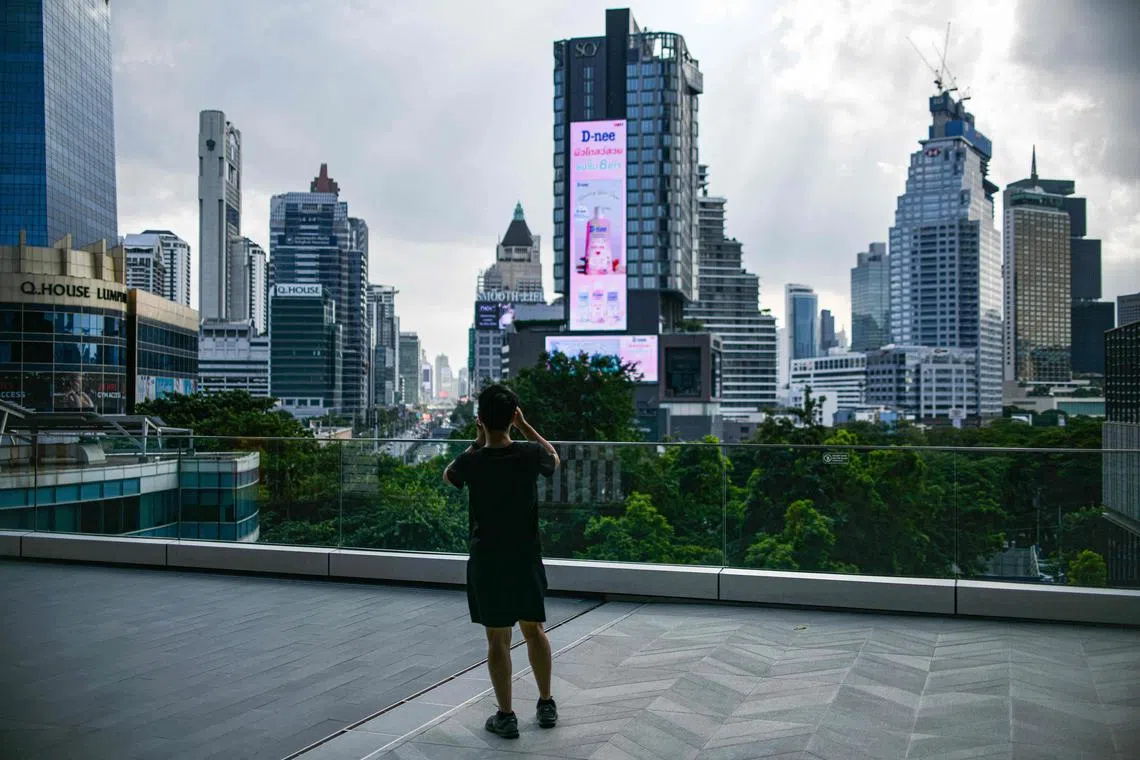Thai hotel industry faces first decline in five years
Sign up now: Get ST's newsletters delivered to your inbox

The downturn is attributed to a combination of falling international tourist numbers, lower occupancy rates, and a decrease in income from other services.
PHOTO: AFP
Follow topic:
The Thai hotel industry is facing its first contraction in five years, with Kasikorn Research Centre predicting a 4.5 per cent drop in revenue for 2025.
This downturn is attributed to a combination of falling international tourist numbers, lower occupancy rates, and a decrease in income from other services.
According to the research centre, a number of key factors are contributing to the challenging outlook.
Fewer tourists: The number of international tourists is projected to fall by 9 per cent in 2025 to approximately 32.2 million. The average length of stay for foreign visitors is also expected to decline.
Lower occupancy and room rates: For the first seven months of 2025, the nationwide occupancy rate was 71.66 per cent, a 0.2 percentage point drop year on year. The full-year occupancy rate is expected to fall by 2.3 percentage points to about 69.83 per cent. Average room rates are also projected to decline by 4 per cent for the year, following a 5 per cent drop in the first seven months.
Declining other revenue: Income from meetings and seminars has shrunk due to fewer international events and concerts compared with the previous year. In the first half of 2025, both domestic and international meetings and seminars decreased by 13 per cent.
Rising costs: Hotel operators are grappling with increased operational costs, especially higher labour wages. However, due to a subdued tourism market and intense competition, they are unable to fully pass these costs on to customers.
The report highlights that the impact of the downturn is not uniform across the industry, with some groups at greater risk than others. These include:
Hotels dependent on international tourists in major destinations like Bangkok, Chon Buri, Songkhla, and Chiang Mai, particularly those catering to visitors from East Asia. These areas face high competition due to a large number of available rooms.
Hotels in border areas, such as Sa Kaeo and Ubon Ratchathani provinces, which are affected by tensions along the Thai-Cambodian border.
Conversely, some provinces are expected to continue growing, primarily those that are popular with domestic tourists, such as Kanchanaburi, Phang Nga, Nakhon Si Thammarat, Nakhon Ratchasima, and Nakhon Phanom.
The research centre warns that the hotel sector faces significant uncertainty, with a risk that both domestic and international tourist numbers could fall below forecasts.
This is due to slowing global and domestic economies and ongoing geopolitical issues.
The situation is particularly concerning for small and medium-sized operators, many of whom have high debt-to-revenue ratios.
Given these challenges, the report concludes that it is increasingly necessary for hotels to transition to a more “sustainable business model”.
This would help them meet the growing demands of environmentally conscious clients and business partners while also reducing their environmental impact and carbon footprint. THE NATION/ASIA NEWS NETWORK

